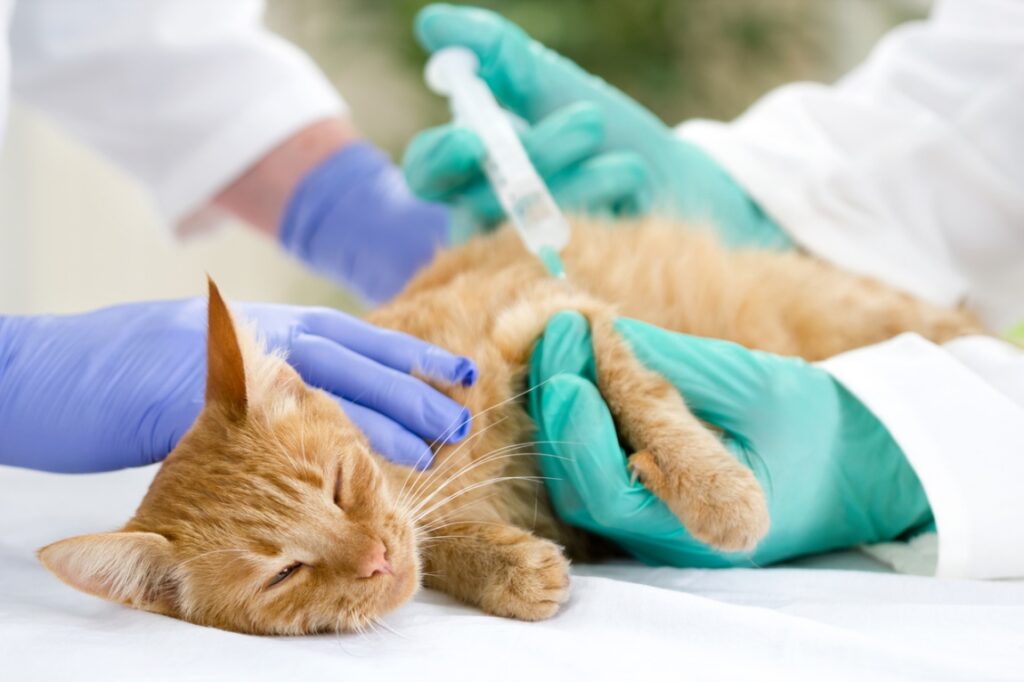At Lenity Vet Specialists and Emergency Care, we understand that many pet owners are unaware that pets can develop diabetes just like humans. Unfortunately, this condition is becoming increasingly common in our furry companions. Recent statistics indicate that 1 in 500 dogs and 1 in 200 cats will be diagnosed with diabetes. While any pet can develop diabetes, certain breeds are more predisposed to this condition. Here are some of the dog and cat breeds that are prone to diabetes:
Dog breeds
- Samoyeds
- Schnauzers
- Toy Poodles
- Australian Terriers
- Golden Retrievers
- Dachshunds
- Beagles
- Cocker Spaniels
Cat breeds
- Burmese
- Siamese
- Maine Coon
What is Diabetes in Pets?
To understand diabetes in pets, let us first examine how a healthy pet’s body functions. The digestive system converts food into glucose (sugar) for cells to use as energy. Insulin, produced by the pancreas, helps move glucose and other nutrients into the cells while maintaining balanced blood sugar levels. If blood glucose levels rise, the pancreas releases more insulin to bring them down. Conversely, if glucose levels drop, insulin production decreases to normalize blood glucose levels. This process provides the body with the energy needed to function properly.
In diabetic pets, this system malfunctions in one of two ways:
1. Type I Diabetes: The pet does not produce enough insulin, necessitating insulin administration to utilize glucose.
2. Type II Diabetes: The pet’s cells do not respond appropriately to insulin, even though the pancreas produces it.
Diabetes causes high blood glucose levels, which leads to glucose spilling into the urine. This excess glucose draws additional fluid through the kidneys, resulting in increased thirst and urination. Moreover, essential nutrients stay outside the cells, causing the cells to starve and potentially leading to numerous health problems due to persistently high blood sugar levels.
Signs of Diabetes in Pets
Diabetes symptoms in pets can either appear suddenly or develop gradually. These symptoms can also indicate other illnesses, so it is crucial to be vigilant and consult with one of our veterinarians if you notice any of the following signs:
- Excessive water drinking
- Increased urination and/or accidents in the house
- Weight loss despite increased appetite
- Urinary tract infections
- Decreased appetite
- Cloudy eyes (especially in dogs)
- Chronic or recurring infections (including skin and urinary infections)
- Weakness in legs (particularly in cats, starting with their back legs)
If your pet exhibits any of these symptoms, schedule an examination with our Internal Medicine veterinarian at Lenity Vet Specialists and Emergency Care. In case of emergency, call the hospital to see an emergency veterinarian anytime.
Early diagnosis and treatment can significantly improve your pet’s chances of a long and healthy life.
Diagnosing Diabetes in Pets
Our veterinarians diagnose diabetes in pets through clinical signs, physical examination, and laboratory tests. The vet will begin by thoroughly examining your pet’s history and symptoms and then perform a physical evaluation. During the physical exam, the veterinarian will check for signs such as dehydration, poor coat condition, and any abnormalities in the pet’s eyes or limbs that might indicate diabetes.
Laboratory Tests
Blood Glucose Levels: Elevated blood glucose levels is an indicator of diabetes. A fasting blood glucose level above a certain threshold (typically around 200 mg/dL in dogs and 300 mg/dL in cats) suggests diabetes.
Fructosamine Test: This test measures average blood glucose levels over the past two to three weeks, helping to confirm a diabetes diagnosis and differentiate it from temporary increases in blood glucose due to stress.
Glucose in the urine:Healthy pets typically do not have glucose in their urine. Glucose in the urine is another significant indicator of diabetes.
Ketones in Urine: Ketones in the urine can indicate diabetic ketoacidosis, a serious complication of diabetes.
Complete Blood Count (CBC) and Biochemistry Profile: These tests help rule out other conditions that might cause similar symptoms and check for concurrent health issues.
Urinalysis: A comprehensive urinalysis can provide additional information about the pet’s overall health and identify any urinary tract infections (which are common in diabetic pets).
Diagnostic Imaging (if necessary):In some cases, your vet might recommend imaging studies like ultrasound or X-rays to assess the pet’s internal organs and rule out other conditions.
By combining clinical evaluation with laboratory testing, veterinarians can accurately diagnose diabetes in pets and develop an effective treatment plan to manage the condition.
Treatment for Diabetes in Pets
While diabetes is manageable, untreated diabetes can lead to severe health problems and death. Early detection and treatment are vital. Typically, treatment includes:
Insulin therapy: Diabetic pets generally require twice-daily insulin injections to control glucose levels. Our veterinarians can teach you how to administer these injections at home.
Prescription Diet:Diabetic prescription diets help regulate blood sugar levels with high fiber and low carbohydrate content, which prevent glucose spikes. They also include high-quality protein to support muscle maintenance and controlled fat levels to manage weight. Additionally, these diets contain extra vitamins, minerals, and antioxidants to boost overall health.
Monitoring and Follow-up
Veterinarians monitor and follow up on pets with diabetes through regular check-ups and specific tests to ensure effective management of the condition. One important method is the glucose curve, which measures your pet’s blood sugar levels over a 12 to 24-hour period. During this test, blood samples are taken at regular intervals to track how glucose levels change throughout the day. This glucose test helps your veterinarian assess how well diabetes is being managed and whether adjustments to insulin dosage or the treatment plan are necessary. Additionally, regular check-ups may include monitoring weight, diet, and any behavioral changes to ensure your pet remains healthy and stable.
Preventing Diabetes in Your Pet
Healthy Diet: Obesity is a leading cause of diabetes in pets. As pets age, they become less active and are more prone to weight gain. Feed your pet a balanced diet and consult with us to determine the best diet. Treats should be given sparingly, primarily for training or rewarding desired behavior.
Regular Exercise: Ensure your pet gets at least 20 minutes of brisk exercise daily. For dogs, this could be a brisk walk or playing fetch at the park. For cats, use toys like wands with feathers or laser pointers to encourage physical activity (never point the laser at their eyes).
Compassionate Care for Pets with Diabetes
Managing a pet with diabetes can initially seem overwhelming, but at Lenity Vet Specialists and Emergency Care, we are here to support you every step of the way. We can show you how to maintain a daily chart to record your pet’s blood glucose levels, diet, weight, and any behavioral changes. With our guidance, you can manage your pet’s diabetes effectively, ensuring minimal disruption to your life while maintaining your pet’s quality of life.
If you have any concerns or need further information, don’t hesitate to reach out to us. Your pet’s health and well-being are our top priorities at Lenity Vet Specialists and Emergency Care.
Your Caring Team,



